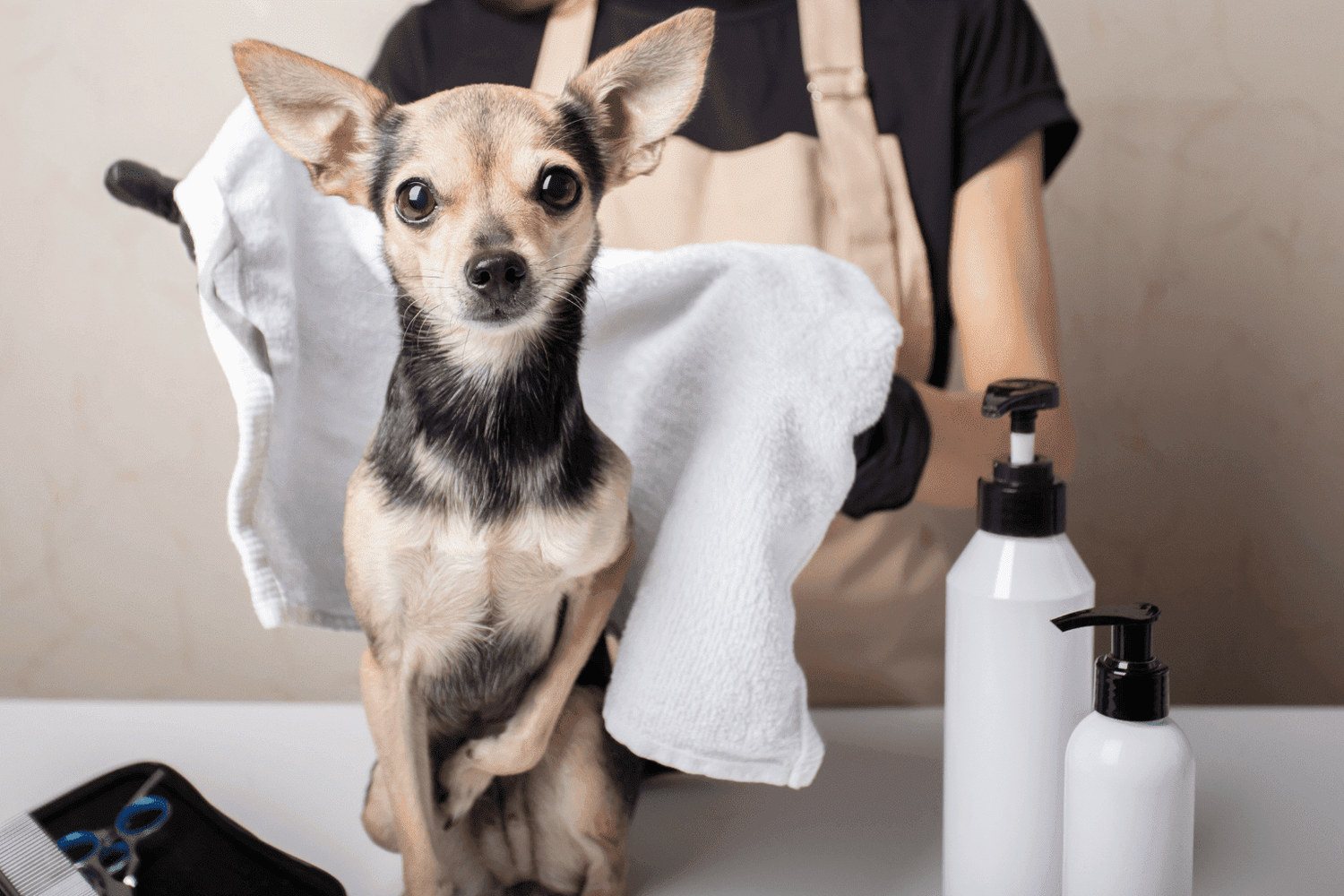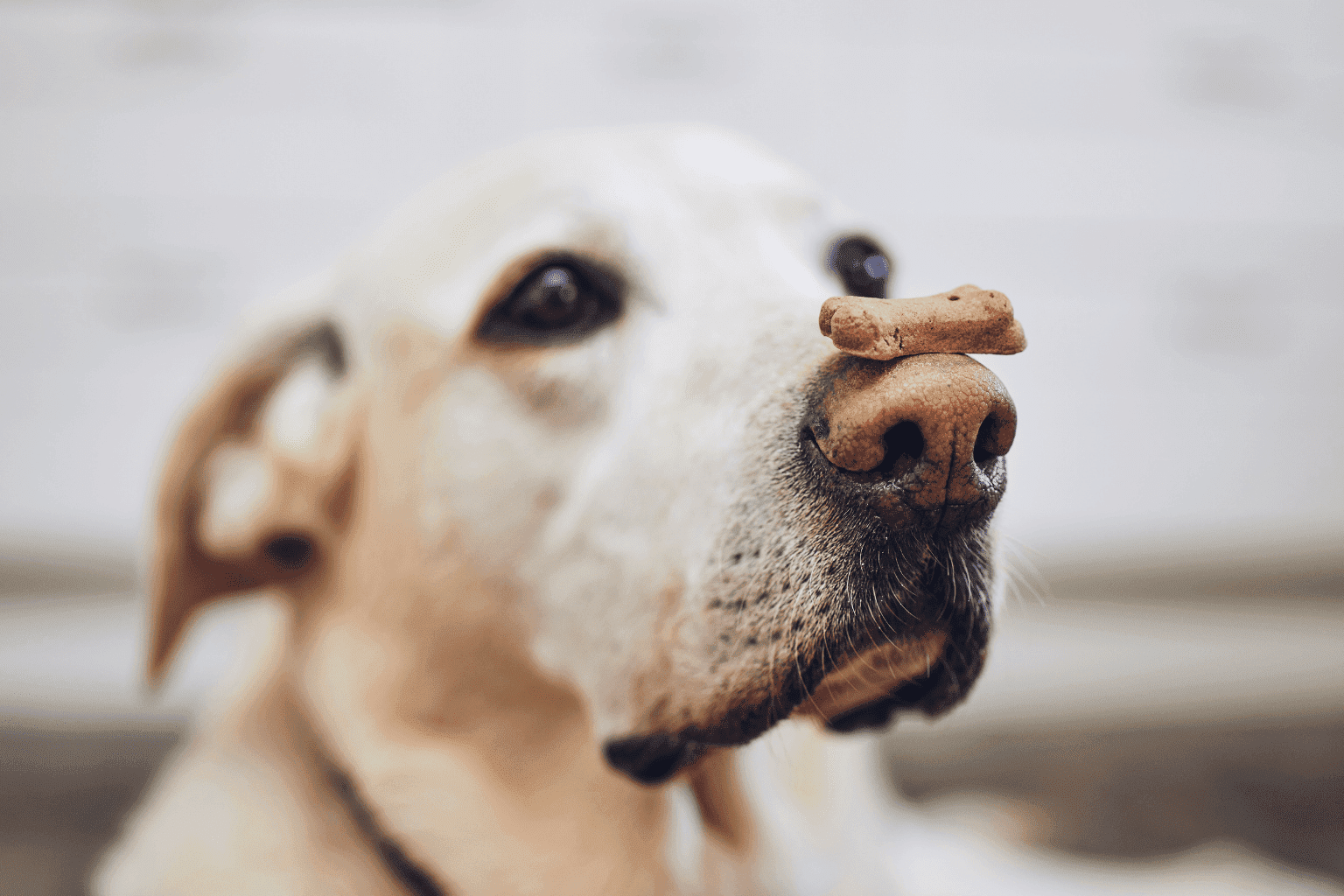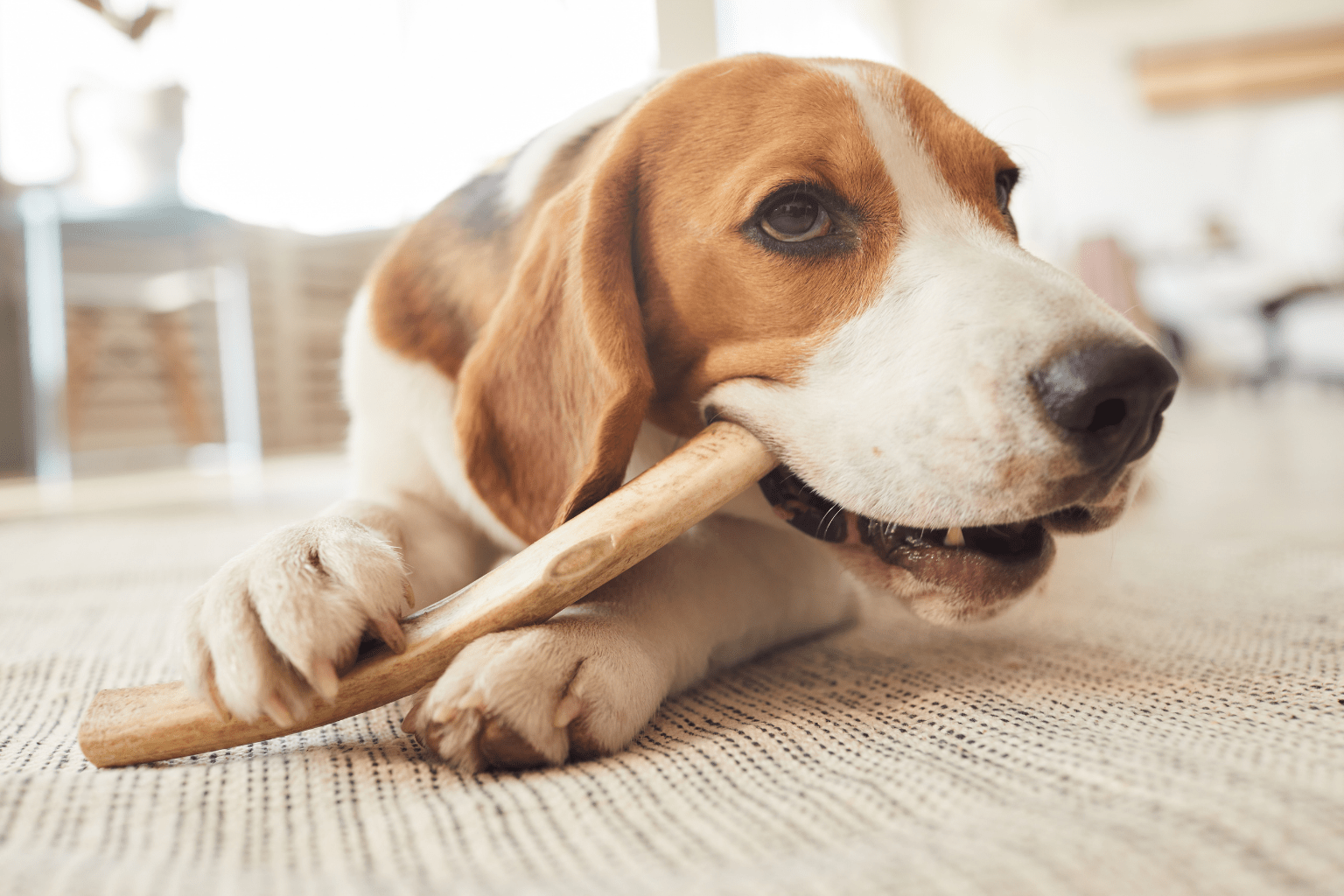Key Takeaways
- Shampooing puppies should start at 8 weeks of age to ensure safety and skin health.
- Use gentle, puppy-specific shampoos formulated for their sensitive skin every 3-4 weeks.
- Puppy skin is up to 25% thinner than adult dogs, requiring extra care during bathing.
- Always use lukewarm water to avoid irritating the puppy's delicate skin barrier.
- Natural, pellet-based shampoos are recommended to prevent skin irritation in puppies.
Table of Contents
- The Ultimate Puppy Bath Blueprint: Shampooing Puppies for Healthy, Happy Coats
- Understanding Puppy Skin and Bath-Time Safety
- How Often Should You Shampoo a Puppy?
- Preparing for the Perfect Puppy Bath
- Step-by-Step Guide: Shampooing Your Puppy Safely
- Troubleshooting Common Puppy Bath Challenges
- Quick Solutions for Shampoo Accidents
- Choosing the Best Shampoo for Puppies
- Shampooing Puppies with Sensitive Skin
- Beyond Shampoos: Holistic Grooming for Happier Puppies
- Nurture With Nature, Community Stories
- Puppy Bath FAQs, Answers for Everyday Pet Parents
- Building Lifelong Grooming Success
The Ultimate Puppy Bath Blueprint: Shampooing Puppies for Healthy, Happy Coats
Giving your puppy a bath is more than just a cleaning routine, it's a vital part of their lifelong health and happiness. Because puppy skin is up to 25% thinner than adult dogs, extra care during bathing is essential to avoid irritation and maintain a shiny, healthy coat.
To support your puppy's sensitive skin, always use gentle, puppy-specific shampoos formulated for their unique needs. If your puppy struggles with itching, shedding, or dandruff, consider a bundle designed for healthy skin and coat to provide comprehensive relief and nourishment.
Natural, pellet-based shampoos are recommended to prevent skin irritation in puppies. These formulations dissolve gently and are less likely to cause allergic reactions or dryness, making them a safe choice for your furry friend.
Understanding Puppy Skin and Bath-Time Safety

Puppy skin differs dramatically from adult dogs. Their epidermis remains thinner and produces fewer natural oils, making them vulnerable to irritation from harsh chemicals or inappropriate products. This delicate skin barrier continues developing until approximately 16 weeks.
| Feature | Puppy Skin | Adult Dog Skin |
|---|---|---|
| Thickness | 25% thinner | Full thickness |
| Oil Production | Minimal | Regular sebum production |
| pH Balance | Still developing | Stable at 6.2-7.4 |
| Chemical Sensitivity | High risk | More tolerant |
Human shampoos and adult dog formulations contain detergents and fragrances that can trigger allergic reactions or strip essential moisture. Watch for post-bath warning signs: excessive scratching, redness, or dull coat texture indicating skin stress.
How Often Should You Shampoo a Puppy?
Healthy puppies need full baths every 3-4 weeks maximum. Over-bathing disrupts their natural oil production, leading to dry, flaky skin and increased vulnerability to irritants. Between scheduled baths, spot-clean muddy paws or minor messes with damp cloths.
Coat type influences timing: short-haired breeds like Beagles maintain cleanliness longer, while long-haired puppies such as Golden Retrievers may need weekly brushing to prevent matting between baths. Track bath dates on your calendar to avoid overdoing it.
Exceptions include medical conditions requiring veterinary-prescribed bathing schedules or particularly messy outdoor adventures. When in doubt, consult your vet rather than defaulting to more frequent washing.
Preparing for the Perfect Puppy Bath
Successful shampooing puppies starts with proper preparation. Gather puppy-safe pellet shampoo, soft towels, a gentle brush, treats for positive reinforcement, and a cup for controlled rinsing. Test water temperature on your wrist, it should feel comfortably warm at 100°F (38°C).
Pre-bath brushing removes loose fur and prevents drain clogs. Check for skin irritation, cuts, or unusual lumps while brushing. This inspection helps you identify areas requiring extra gentle care during washing.
Create a calm environment by speaking softly and having treats readily available. Rescue puppies especially benefit from gradual introduction, let them explore the empty tub with treats before adding water.
Step-by-Step Guide: Shampooing Your Puppy Safely

Step 1: Wet your puppy's coat thoroughly with lukewarm water, avoiding face and ears. Use a cup or gentle sprayer to control water flow and prevent startling.
Step 2: Apply a pea-sized amount of puppy-safe pellet shampoo. These dissolve gently without harsh liquid chemicals. Massage into the coat with your fingertips, working from neck toward tail.
Step 3: Allow 2-3 minutes for the formula to work while offering gentle ear rubs or small treats to keep your puppy relaxed and cooperative.
Step 4: Rinse until water runs completely clear. Incomplete rinsing causes skin irritation and dull coats. Pay extra attention to thick-coated areas where residue hides.
Step 5: Pat dry with soft towels, never rub vigorously. Finish with air-drying or a blow dryer on cool setting held at safe distance.
Troubleshooting Common Puppy Bath Challenges
Bath-resistant puppies need patience and positive associations. Start with shallow water and gradually increase depth over multiple sessions. Keep initial baths brief, 5 minutes maximum, building tolerance slowly.
Quick Fixes for Common Issues:
- Shampoo in eyes: Rinse immediately with clean water, use damp cloth for face cleaning
- Matted fur: Detangle before wetting, wet mats tighten and become harder to remove
Quick Solutions for Shampoo Accidents
Shampoo in eyes requires immediate gentle flushing with clean water. Use a damp cloth to carefully wipe around the eye area without pressing directly on the eyeball. For ears, avoid inserting anything deep, simply wipe outer areas with a slightly damp towel.
Matted fur needs pre-bath attention. Work through tangles with a detangling brush before shampooing puppies, as wet mats tighten and become impossible to remove. Severely matted areas may require professional grooming to prevent skin damage.
If your puppy accidentally ingests shampoo, offer fresh water immediately and contact your veterinarian. Natural pellet formulations pose minimal risk compared to liquid chemicals, but professional guidance ensures peace of mind.
Choosing the Best Shampoo for Puppies

Quality puppy shampoos must be pH-balanced, hypoallergenic, and free from harsh detergents. Pellet formulations offer superior safety by eliminating liquid chemicals that can splash into sensitive eyes or be accidentally ingested during bath time.
| Essential Quality | Safe Puppy Shampoo | Problematic Products |
|---|---|---|
| Form | Gentle pellets | Harsh liquid chemicals |
| pH Level | 6.2-7.4 (dog-specific) | Human pH (too acidic) |
| Ingredients | Natural, minimal | Sulfates, artificial fragrances |
| Safety | Non-toxic if licked | Harmful if ingested |
Adult dog shampoos contain stronger cleaning agents designed for mature skin barriers. These formulations can strip puppy coats of essential oils, causing dryness and irritation. Always choose products specifically labeled for puppies under 16 weeks.
Community proof speaks volumes, Rescue Rachel manages 30+ animals and relies exclusively on gentle pellet formulations for her sensitive, multi-breed crew without adverse reactions.
For more grooming tips and related advice, check out our pet blog tips for a variety of helpful articles.
Shampooing Puppies with Sensitive Skin
Allergy-prone and rescue puppies require extra precautions when shampooing puppies. Test any new product on a small skin patch 24 hours before full bathing. Watch for redness, excessive scratching, or unusual behavior indicating sensitivity.
If your puppy is prone to allergies or immune issues, consider using a dog allergy & immune support remedy to help support sensitivities and promote overall skin health.
BestLife4Pets gentle pellets dissolve completely without leaving residue that triggers reactions. Fiona successfully bathed her chronically ill kitten using this approach, no drama, no side effects, just clean, comfortable fur.
Chronic illness puppies may need modified schedules. Consult your veterinarian about timing baths around medications or treatments. Some conditions require more frequent cleaning, while others benefit from extended intervals between washes.
Beyond Shampoos: Holistic Grooming for Happier Puppies
Regular brushing between baths maintains coat health and strengthens your bond. Long-haired breeds benefit from daily brushing, while short coats need weekly attention. Use appropriate tools, slicker brushes for thick coats, bristle brushes for smooth ones.
Integrate natural wellness support during grooming routines. WALK-EASY® Joint & Hip Pain Relief Remedy can help support joint comfort, especially as your puppy grows and becomes more active.
Transform bath time into celebration rituals. Many pet parents report their puppies now eagerly anticipate grooming sessions when combined with special treats, gentle massage, and post-bath playtime.
For more on grooming other pets, you may also be interested in shampooing cats and how their needs compare to puppies.
Nurture With Nature, Community Stories

"Bailey's first bath was a breeze with gentle pellets and loving hands! No tears, no stress, just a clean, happy puppy." Golden-Years Gary discovered that patience and natural products transformed his anxious rescue into a bath-loving companion.
Wellness Wendy shares: "I was terrified of harming my sensitive puppy's skin. The pellet formula gave me confidence, no harsh chemicals, no worries about accidental ingestion." Her daily grooming routine now supports prevention over expensive vet visits.
Have a puppy bath tip or success story? Share it with our #BestLife4Pets pack! Discover BestLife4Pets gentle homeopathic pellets, nurture your puppy with care, compassion, and all-natural hope.
Not a substitute for professional veterinary advice.
Puppy Bath FAQs, Answers for Everyday Pet Parents
Building Lifelong Grooming Success
Early positive experiences with shampooing puppies establish foundation habits lasting throughout your dog's life. Puppies who associate baths with gentle care, treats, and bonding become cooperative adult dogs requiring minimal restraint during grooming.
Consider seasonal adjustments as your puppy matures. Summer activities may require more frequent washing, while winter coats need extra moisture protection. Adult dogs typically transition to monthly bathing schedules by their first birthday.
Professional grooming becomes valuable for complex coat types or behavioral challenges. Establish relationships with groomers early, allowing your puppy to acclimate gradually through short visits before full services.
Monitor skin changes throughout puppyhood, allergies, sensitivities, and coat texture evolve with age. What works at 8 weeks may need adjustment at 6 months. Natural pellet formulations adapt easily to changing needs without harsh chemical exposure.
Document your puppy's grooming preferences and reactions. This record helps veterinarians identify skin issues early and guides product choices as your companion grows into their unique coat characteristics and personality.
For additional expert advice on choosing the right shampoo, see this veterinary guide to puppy shampoos.
To further support your puppy's skin and coat health, explore our Healthy Skin & Coat collection for natural solutions.
Frequently Asked Questions
At what age is it safe to start shampooing my puppy, and why is this timing important?
It’s best to start shampooing your puppy at 8 weeks of age. This timing ensures their skin has developed enough to handle gentle cleaning without irritation, as puppy skin is still very thin and sensitive during the early weeks.
How often should I bathe my puppy to maintain healthy skin without causing irritation?
Bathing your puppy every 3 to 4 weeks is ideal to keep their coat clean while protecting their delicate skin. Over-bathing can strip natural oils and cause dryness or irritation, so spacing baths helps maintain skin health.
What types of shampoos are best suited for puppies with sensitive skin, and why are natural, pellet-based shampoos recommended?
Gentle, puppy-specific shampoos designed for sensitive skin work best. Natural, pellet-based shampoos are recommended because they dissolve gently and are less likely to cause allergic reactions or dryness, making them a safer choice for your puppy’s delicate skin.
What precautions should I take during puppy bath time to protect their delicate skin and prevent common issues like itching or dryness?
Use lukewarm water and avoid harsh detergents or fragrances that can irritate puppy skin. Always choose gentle, natural shampoos and rinse thoroughly to prevent residue buildup, which helps reduce itching and dryness after the bath.



